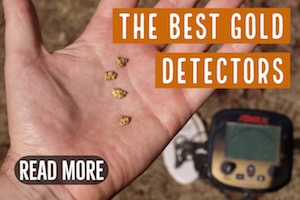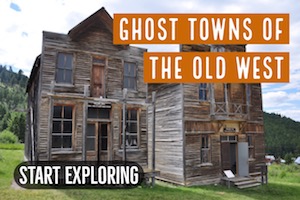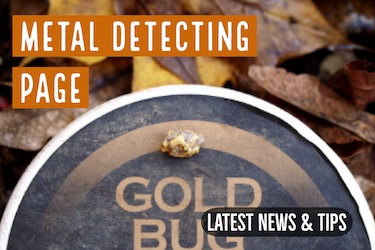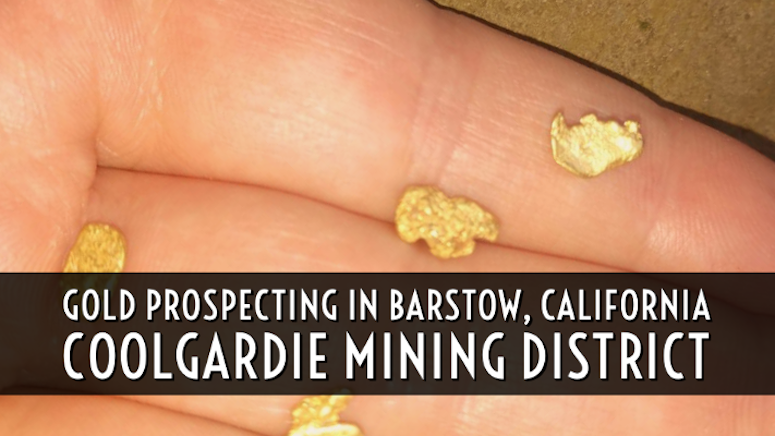
Some of California’s earliest known gold deposits were found in the harsh desert of San Bernardino County. In fact, many are surprised to learn just how much gold was found in Southern California since the northern half of the state gets most of the attention.
Yes indeed, the desolate barren desert around Barstow actually saw a fair amount of mining activity during the first part of the 20th century. Let’s learn more about the history of gold in this area.
Gold: 15 Miles North of Barstow
Prior to the year 1900, there wasn’t much activity around Barstow. This is perhaps no surprise to people familiar with the area, since there still isn’t much going on here. Most people only pass through this desert on their way from Los Angeles to Las Vegas.
Gold was actually first discovered in 1896, though it took a few years to attract anyone to the area to mine it.
These scattered gold deposits were found in an area around 15 to 20 miles north of Barstow in an area that would eventually be named Coolgardie. Nothing exists there today that would indicated there was much mining in the area, but for a time there was some interest.
By 1900, there were a few interested miners searching for gold, and the Cool Gardie Mining Company was active here from 1900 to 1915.

Dry Placers
The miners here encountered the same challenges of many mining camps throughout the Southwest. With no water available, only dry placer operations were viable. While gold could be recovered, the process was much slower than other methods like sluicing or dredging.
One and two-man operations utilizing dry washers was the preferred method at the Coolgardie area. It was effective, but also slow.
There may have been as many as 500+ men actively mining at Coolgardie during the first few years. Since the dry mining was so difficult, it also meant that the gold couldn’t be “mined out” in a matter of just a few years. Gold was found across a very large area and new discoveries were worked for many years.
The first rush of activity occurred up to about 1915, but renewed interest was given to the abandoned area at the height of the Great Depression. Once again during the late 1920s and early 1930s there were men scraping a living from the land.
Read: How Does a Drywasher Work?

A two-man drywashing operation in Coolgardie. Drywashers use air pressure and vibration to separate gold out of dirt and gravel. They are effective, but they also missed a lot of gold too. This was hot, dusty work.
The Gold’s Hidden Source
The source of the gold found in this isolated patch of the Mojave Desert is not necessarily known. In all likelihood, it comes from auriferous veins in mountains that have long since eroded away. After many millions of years, the loose gold has deposited throughout the washes.
That first 15 years of mining activity by the Cool Gardie Mining Company resulted in roughly $100,000 in gold. Certainly a lot of money, but nowhere close to what would be considered a “rich” mining camp. There were areas in northern California that probably produced that much gold in a matter of weeks during the height of the California Gold Rush.
Today you will find countless flattened piles of dirt in the area showing evidence of this once active mining camp in the Southern California desert. Most structures that were once there were salvaged and removed once mining ended. This was never intended to be a permanent settlement. Once the best of the gold was gone, people moved on.
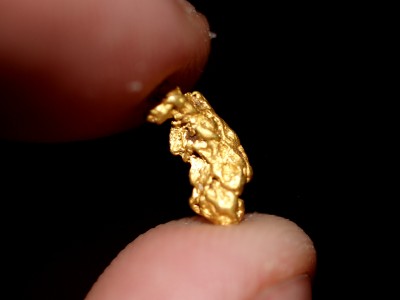
Modern Prospecting in the Barstow Area
Most people only stop in Barstow on their way to other places. You won’t find a lot of people making it a destination.
However, for a gold prospector in Southern California this barren desert still holds potential. A modern-day prospector can still find gold here if you know where to look and how to do it.
Drywashers are still used today, and they can still be very effective. They only work efficiently if the soils area bone dry, and you can bet that much of the year the soils here are indeed bone dry. Dirt is shoveled directly into the head of the drywasher and the air/vibration of the unit helps to separate out the gold.
Drywashing is effective, but it’s dusty, grimy work. Prospectors still use them, but more people prefer to use metal detectors. The screens on drywashers would sometimes reject the bigger gold nuggets and as a result they would be lost.
The best method for finding nuggets is to scan the old dry washer piles and see if you can located a lost chunk of gold.
You should bring along one more important tool with you, and that is a rake. These old mining camps have been detected pretty hard over the years, so you probably aren’t going to find a lone nugget sitting right on top of the pile.
Use a steel garden rake to take a few inches off of the pile. Scan everything slowly and carefully with your detector. Then rake of another few inches and scan again. This method can turn up a surprising amount of gold.




